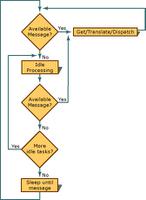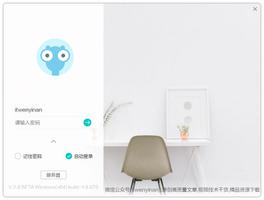Python-Tkinter滚动条框架
我的目标是向具有多个标签的框架添加垂直滚动条。一旦框架内的标签超过框架的高度,滚动条应自动启用。搜索之后,我发现了这个有用的帖子。根据该帖子,我了解到要实现我想要的功能(如果我错了,请纠正我,我是一个初学者),我必须先创建一个Frame,然后Canvas在该框架内创建一个并将滚动条粘贴到该框架上好。之后,创建另一个框架并将其作为窗口对象放在画布内。所以,我终于想出了这个:
from Tkinter import *def data():
for i in range(50):
Label(frame,text=i).grid(row=i,column=0)
Label(frame,text="my text"+str(i)).grid(row=i,column=1)
Label(frame,text="..........").grid(row=i,column=2)
def myfunction(event):
canvas.configure(scrollregion=canvas.bbox("all"),width=200,height=200)
root=Tk()
sizex = 800
sizey = 600
posx = 100
posy = 100
root.wm_geometry("%dx%d+%d+%d" % (sizex, sizey, posx, posy))
myframe=Frame(root,relief=GROOVE,width=50,height=100,bd=1)
myframe.place(x=10,y=10)
canvas=Canvas(myframe)
frame=Frame(canvas)
myscrollbar=Scrollbar(myframe,orient="vertical",command=canvas.yview)
canvas.configure(yscrollcommand=myscrollbar.set)
myscrollbar.pack(side="right",fill="y")
canvas.pack(side="left")
canvas.create_window((0,0),window=frame,anchor='nw')
frame.bind("<Configure>",myfunction)
data()
root.mainloop()
- 我做对了吗?有没有更好/更聪明的方法来实现此代码给我的输出?
- 为什么必须使用网格方法?(我尝试了放置方法,但是所有标签都没有出现在画布上。)
- anchor=’nw’在画布上创建窗口时使用的特别之处是什么?
我是初学者,请保持简单的答案。
回答:
请注意,建议的代码仅适用于Python 2
这是一个例子:
from Tkinter import * # from x import * is bad practicefrom ttk import *
# http://tkinter.unpythonic.net/wiki/VerticalScrolledFrame
class VerticalScrolledFrame(Frame):
"""A pure Tkinter scrollable frame that actually works!
* Use the 'interior' attribute to place widgets inside the scrollable frame
* Construct and pack/place/grid normally
* This frame only allows vertical scrolling
"""
def __init__(self, parent, *args, **kw):
Frame.__init__(self, parent, *args, **kw)
# create a canvas object and a vertical scrollbar for scrolling it
vscrollbar = Scrollbar(self, orient=VERTICAL)
vscrollbar.pack(fill=Y, side=RIGHT, expand=FALSE)
canvas = Canvas(self, bd=0, highlightthickness=0,
yscrollcommand=vscrollbar.set)
canvas.pack(side=LEFT, fill=BOTH, expand=TRUE)
vscrollbar.config(command=canvas.yview)
# reset the view
canvas.xview_moveto(0)
canvas.yview_moveto(0)
# create a frame inside the canvas which will be scrolled with it
self.interior = interior = Frame(canvas)
interior_id = canvas.create_window(0, 0, window=interior,
anchor=NW)
# track changes to the canvas and frame width and sync them,
# also updating the scrollbar
def _configure_interior(event):
# update the scrollbars to match the size of the inner frame
size = (interior.winfo_reqwidth(), interior.winfo_reqheight())
canvas.config(scrollregion="0 0 %s %s" % size)
if interior.winfo_reqwidth() != canvas.winfo_width():
# update the canvas's width to fit the inner frame
canvas.config(width=interior.winfo_reqwidth())
interior.bind('<Configure>', _configure_interior)
def _configure_canvas(event):
if interior.winfo_reqwidth() != canvas.winfo_width():
# update the inner frame's width to fill the canvas
canvas.itemconfigure(interior_id, width=canvas.winfo_width())
canvas.bind('<Configure>', _configure_canvas)
if __name__ == "__main__":
class SampleApp(Tk):
def __init__(self, *args, **kwargs):
root = Tk.__init__(self, *args, **kwargs)
self.frame = VerticalScrolledFrame(root)
self.frame.pack()
self.label = Label(text="Shrink the window to activate the scrollbar.")
self.label.pack()
buttons = []
for i in range(10):
buttons.append(Button(self.frame.interior, text="Button " + str(i)))
buttons[-1].pack()
app = SampleApp()
app.mainloop()
它尚未将鼠标滚轮绑定到滚动条,但是可以的。但是,使用滚轮滚动可能会有些颠簸。
编辑:
到1)
恕我直言,滚动帧在Tkinter中有些棘手,而且似乎做得并不多。似乎没有优雅的方法可以做到这一点。
代码的一个问题是你必须手动设置画布大小-这就是我发布的示例代码所解决的问题。
至2)
你在谈论数据功能?Place也对我有用。(总的来说,我更喜欢网格)。
到3)
好吧,它将窗口放置在画布上。
我注意到的一件事是,你的示例默认情况下会处理鼠标滚轮滚动,而我发布的示例则不会。一定要看一下。
以上是 Python-Tkinter滚动条框架 的全部内容, 来源链接: utcz.com/qa/433506.html




